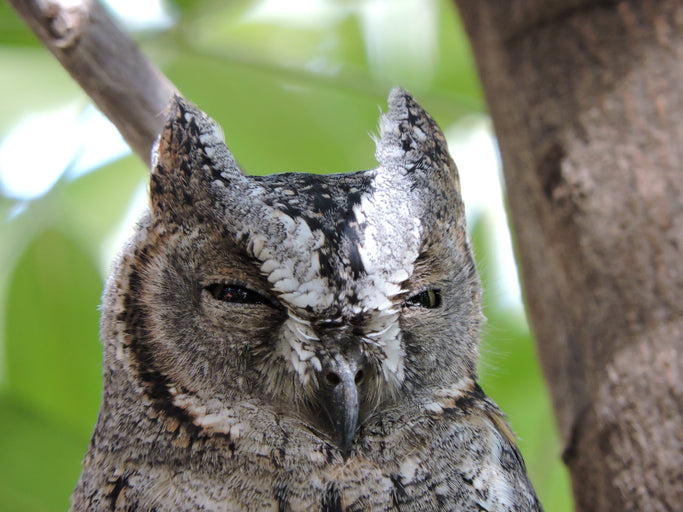
Scops Owl
Share
The Elusive Scops Owls of Kruger National Park 🦉
In the twilight shadows of Kruger National Park, the Scops Owl remains one of the most elusive yet enchanting creatures. Small in size but large in character, these owls bring the night alive with their distinct calls and mysterious presence.
Tiny Nighttime Hunters: Scops Owls are among the smallest owls in the park, standing just 16 to 20 centimeters tall. Their diminutive size makes them adept at navigating through dense foliage in search of insects and small rodents, which make up the bulk of their diet. 🌌🐁
Camouflage Experts: With their mottled, grey-brown plumage, Scops Owls are masters of camouflage. During the day, they roost in tree cavities or against tree trunks, blending seamlessly into their surroundings to avoid predators and snooze undisturbed. 🍂🌳
Distinctive Calls: The call of the Scops Owl is a repetitive and soft 'prrp', often heard throughout the night. These calls are not just communication but also a way to establish territory and attract mates. Listening for these subtle sounds can be one of the most rewarding experiences for any bird enthusiast. 🎶🌜
Breeding and Behaviour: Scops Owls are solitary for most of the year, coming together only during the breeding season. They nest in hollows of trees, where the female lays and incubates the eggs. Both parents participate in feeding the chicks once they hatch, showcasing their dedicated parental care. 🥚👶
Fun Fact for Kids: Did you know that despite their small size, Scops Owls can rotate their heads up to 270 degrees? This incredible ability allows them to look in almost any direction without moving their bodies, helping them spot prey and keep an eye out for dangers. 🔄👀
Engage and Learn: As you colour in the Scops Owl on your Kruger Park roll, imagine the quiet, mysterious world they inhabit. Every stroke brings you closer to understanding the delicate balance of Kruger’s nocturnal wildlife. 🖍️📘